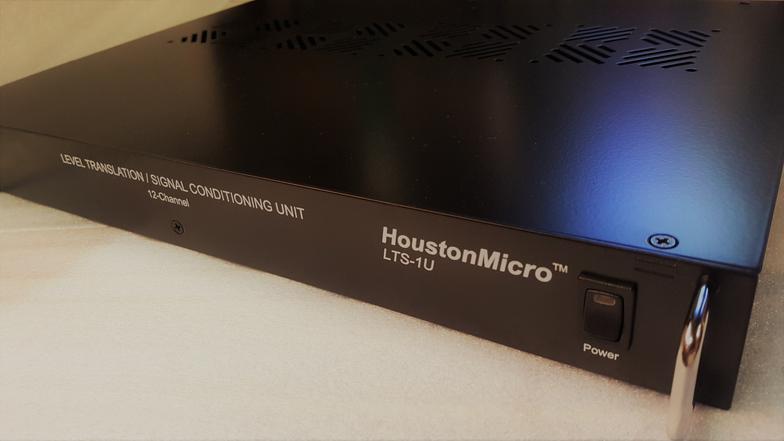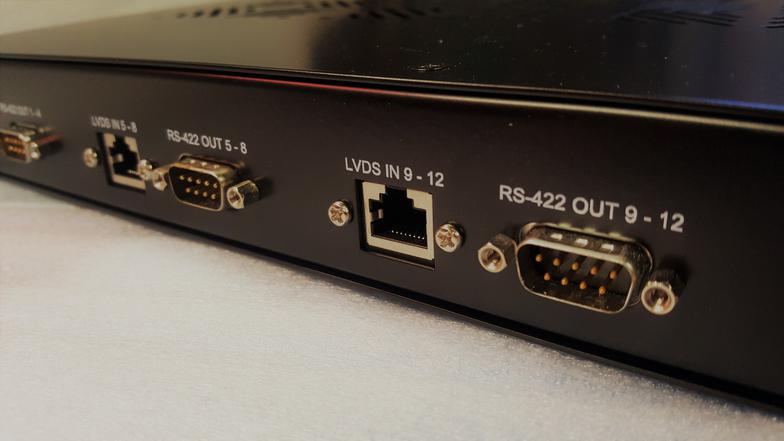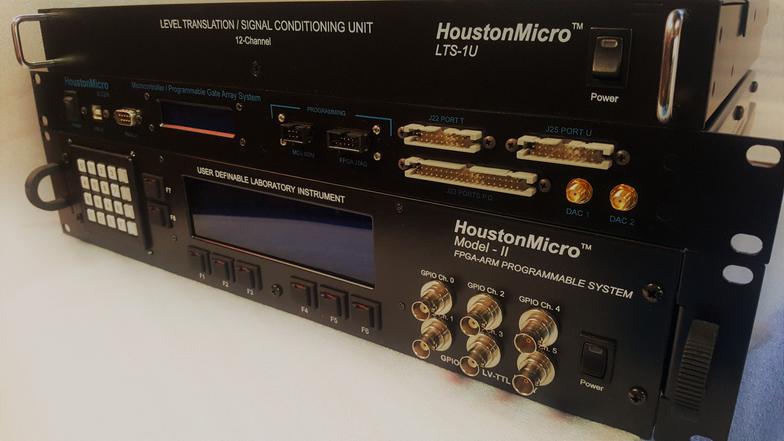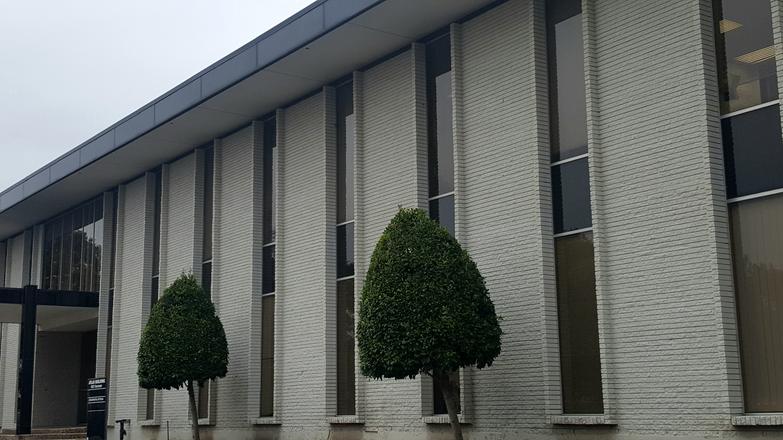HoustonMicro
TM
Signal Transceivers / Signal Conditioners
Interface Directly with our FPGA Platforms
Or as Standalone Units
Distance, Noise, and Signal Degradation
Transporting signals from one location to another in a test environment can involve short and long distances, various signal speeds, and different signal types. Transmitting signals directly can introduce noise, bit errors, and be prone to electromagnetic interference (EMI). As signaling frequencies have become higher, this has become a source for signaling errors, and an important factor in reliable laboratory testing environments.
For example, a need may exist to send a TTL, PECL or other signal type to a system that is multiple rooms away or farther, or at high data/clock frequencies. At short distances, this may work with little issue. However, as distances increase, signal frequencies at those distances cause degradation of signal quality, introducing the potential for noise, impedance issues (signal reflections) and erroneous signal transmission.
Reliable Differential or Optical Transmission
Differential or optical signal transmission increase signal integrity and reliability by converting your source into higher reliable noise-rejecting differential signaling, substantially more immune to signal errors even at longer distances. Our differential mode transmitters and receiver systems achieve this performance without introducing protocols or other formatting overhead, thus increasing available bandwidth and improving signal timing. At data rates above 200 Mbps, or when longer distances are required, fiberoptic transmitters can be utilized to achieve even longer transmission up to 10 Kilometers.
At the receiver, the transmitted signal can be converted back to your original source or translated to a different signal type. This allows signal transmission at longer distances, while also providing the changing of signal types at the end location if needed. Although actual rates and distances are dependent on cable quality and signal interface, at rates typically up to 200 Mbps, differential mode transmission allows the use of readily available and cost effective CAT 5 or CAT 6 cabling between transmitter and receiver at up to 130ft, saving cost and time during installation for many common inter-laboratory applications
Our signal transportation systems are designed to interface directly with our FPGA platforms, and can be built to customer specification, with various signal interfaces including: TTL, LV-TTL, PECL, RS-422, RS-232, LVDS.
For more information, please contact us at the link below…
FPGA Platforms shown interfaced with Transceiver / Signal Conditioners, allowing FPGA/ARM processing, signal transportation at long distances, and signal translation.
Our FPGA platforms can be interconnected directly with our Transceivers / Signal Conditioners with standard RJ45/CAT 6 cabling.
HoustonMicro Computer Company, LLC. 16821 Buccaneer Ln. Suite 106. Houston, Tx. 77058
...................................................................................................................................................................................................................................................





